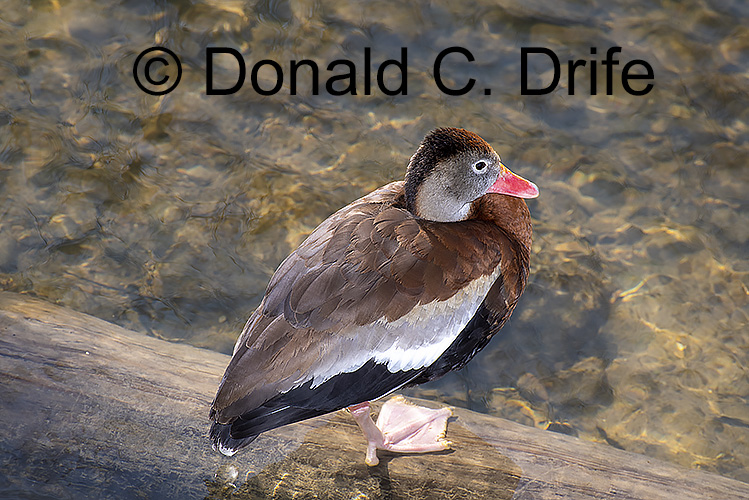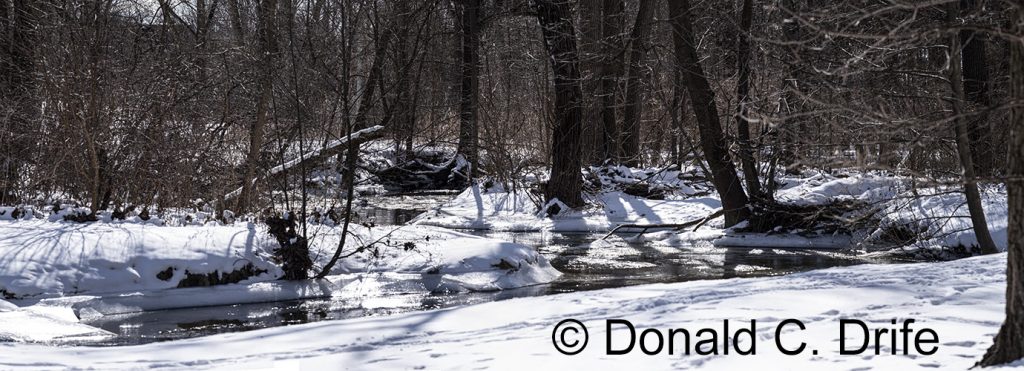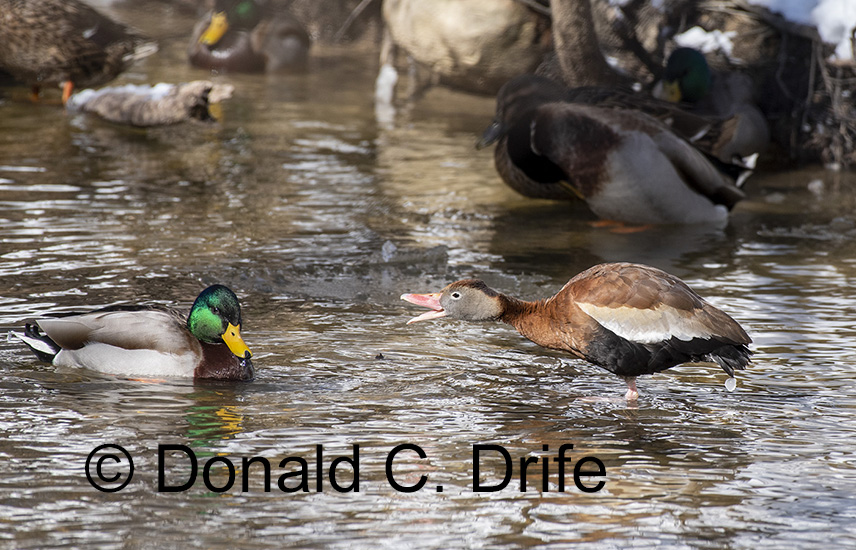
Recently (February 29th) I visited Shiawassee Park in Farmington, Michigan to search for the Black-bellied Whistling Duck. This duck normally occurs in Texas, Louisiana, and Arizona, but one individual has hung around southeastern Michigan since last August. This is the eighth Michigan record. Normally I don’t chase after other people’s bird sightings, but it was the first sunny day in weeks, and I wanted to get out of the house.

The Upper Rouge River flows through the park. Water quality along this stretch of river is good. One sign of the water quality is the Redside Dace (Clinostomus elongatus), a state endangered minnow, occurs here. Speckled Alders (Alnus incana), several a foot in diameter, grow along this winding river. A Tufted Titmouse called “Peter, Peter, Peter” from the opposite bank. Spring is coming.

I sauntered along the river, enjoying the sunshine and my quiet time alone. I continued watching the stream and found only Mallards. Mallards are pretty ducks with their green heads set off from their brown breasts by a narrow band of white. If they were rarer, people would stop ignoring them.

I found the Black-bellied Whistling Duck with a group of Mallards. It was standing on a submerged log. I could see its pink legs under the water. Other field marks of this distinctive duck are a pinkish-red bill, a gray cheek patch, white eye ring, and a black belly. They are nocturnal feeders and this one had her/his bill tucked under their wing sleeping. A Mallard got too close and suddenly the Whistling Duck woke up, snapping its bill. It didn’t call. I wanted to hear its whistle.
This short walk renewed my spirit. I hope the signs of spring I observed were real. I’m ready for a rebirth.
Copyright 2020 by Donald Drife
Webpage Michigan Nature Guy
Follow MichiganNatureGuy on Facebook
